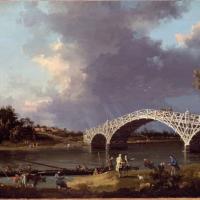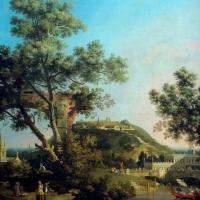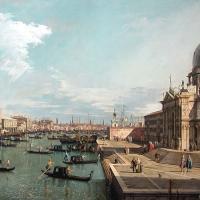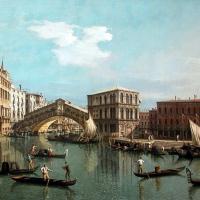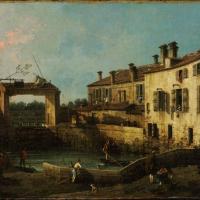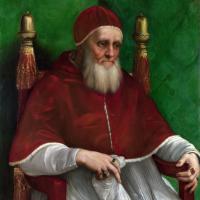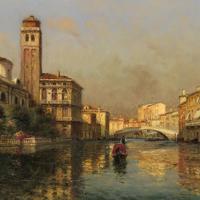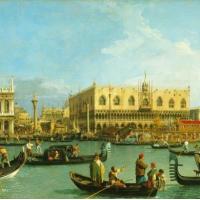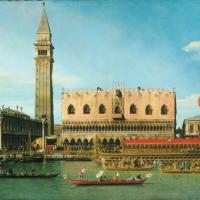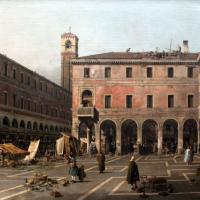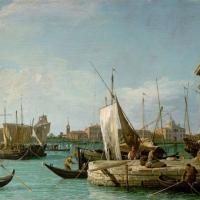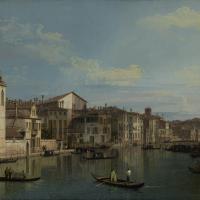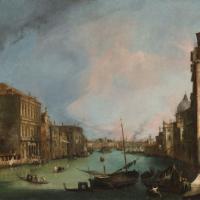Canaletto
A Regatta On The Grand Canal
$540.00
A View Of Walton Bridge
$480.00
Bacino Di San Marco
$540.00
Eton College Chapel
$480.00
Fondaco Dei Tedeschi
$480.00
Le Pont Du Rialto
$480.00
Lock Near Dolo
$480.00
Old Walton Bridge
$480.00
Paints of Venice
$480.00
Pope Julius II
$480.00
Roma
$480.00
The Campo Di Rialto
$480.00
The Dogana In Venice
$480.00
Canaletto
Canaletto (1697-1768)
Giovanni Antonio Canal (18 October 1697 – 19 April 1768), better known as Canaletto, was an Italianpainter of city views or vedute, of Venice, Rome, and London. He also painted imaginary views (referred to as capricci), although the demarcation in his works between the real and the imaginary is never quite clearcut. He was further an important printmaker using the etching technique. In the period from 1746 to 1756 he worked in England where he painted many sights of London. He was highly successful in England, thanks to the British merchant and connoisseur Joseph Smith, whose large collection of Canaletto's works was sold to King George III in 1762.
He was born in Venice as the son of the painter Bernardo Canal, hence his mononym Canaletto ("little Canal"), and Artemisia Barbieri. Canaletto served his apprenticeship with his father and his brother. He began in his father's occupation, that of a theatrical scene painter. Canaletto was inspired by the Roman vedutista Giovanni Paolo Pannini, and started painting the daily life of the city and its people. Much of Canaletto's early artwork was painted "from nature", differing from the then customary practice of completing paintings in the studio. However, his paintings are always notable for their accuracy: he recorded the seasonal submerging of Venice in water and ice.
Many of his pictures were sold to Englishmen on their Grand Tour, first through the agency of Owen Swiny and later the banker Joseph Smith, appointed British Consul in Venice in 1744. He was often expected to paint England in the fashion with which he had painted his native city. Canaletto's painting began to suffer from repetitiveness, losing its fluidity, and becoming mechanical to the point that the English art critic George Vertue suggested that the man painting under the name 'Canaletto' was an impostor. Historian Michael Levey described his work from this period as "inhibited".
The artist was compelled to give public painting demonstrations in order to refute this claim; however, his reputation never fully recovered in his lifetime.
After his return to Venice, Canaletto was elected to the Venetian Academy in 1763 and appointed prior of the Collegio dei Pittori. He continued to paint until his death in 1768. In his later years he often worked from old sketches, but he sometimes produced surprising new compositions. He was willing to make subtle alternations to topography for artistic effect.
His pupils included his nephew Bernardo Bellotto, Francesco Guardi, Michele Marieschi, Gabriele Bella, and Giuseppe Moretti. The painter, Giuseppe Bernardino Bison was a follower of his style.
Joseph Smith sold much of his collection to George III, creating the bulk of the large collection of works by Canaletto owned by the Royal Collection. in 1762, George III paid £20,000 for Consul Smith's collection of 50 paintings and 142 drawings. There are many examples of his work in other British collections, including several (19) at the Wallace Collection and a set of 24 in the dining room at Woburn Abbey. A large set of Canaletto works was also part of the collection of the Earls of Carlisle, however many were lost at the 1940 fire of Castle Howard and others were sold over the last century. Among those formerly at the Carlisle collection are "The Bacino di San Marco: looking East", now at the Museum of Fine Arts, Boston (sold in 1939) and the pair "Entrance to the Grand Canal from the Molo, Venice" and "The Square of Saint Mark's, Venice", now at the National Gallery of Art, Washington DC (sold in 1938). The last important venetian veduta at Castle Howard was by Bernardo Bellotto, "A View of the Grand Canal Looking South from the Palazzo Foscari", which was sold at Sotheby's in July 2015 for £2.6 million.
Canaletto's views always fetched high prices, and as early as the 18th century Catherine the Great and other European monarchs vied for his grandest paintings. The record price paid at auction for a Canaletto is £18.6 million for View of the Grand Canal from Palazzo Balbi to the Rialto, set at Sotheby's in London in July 2005.



